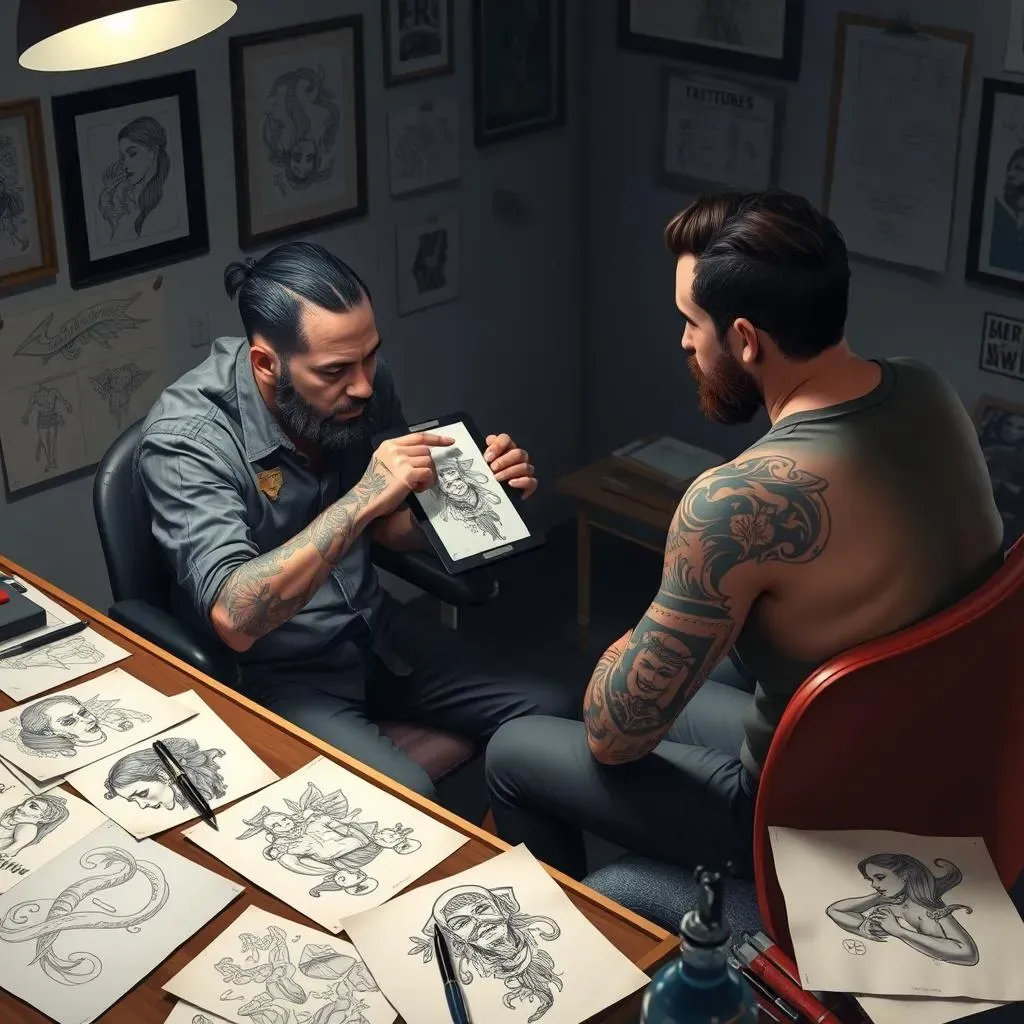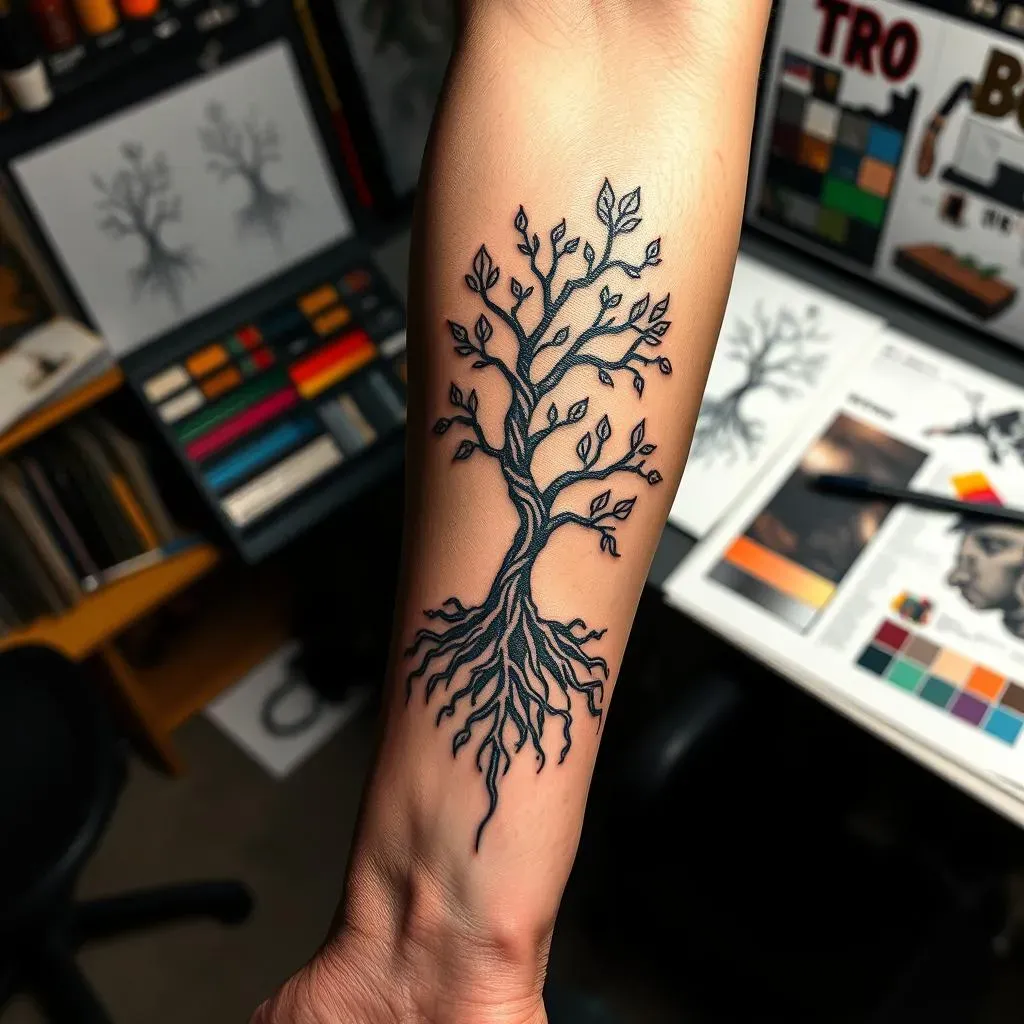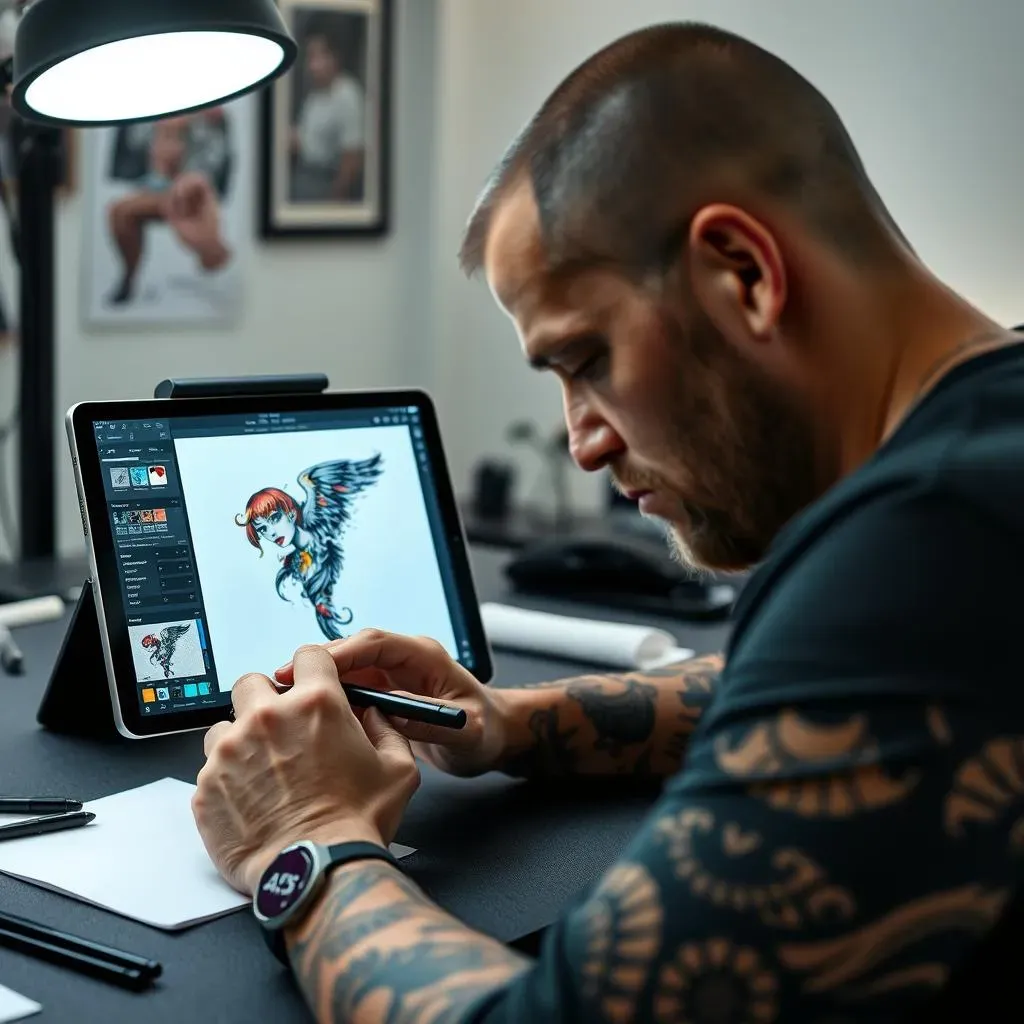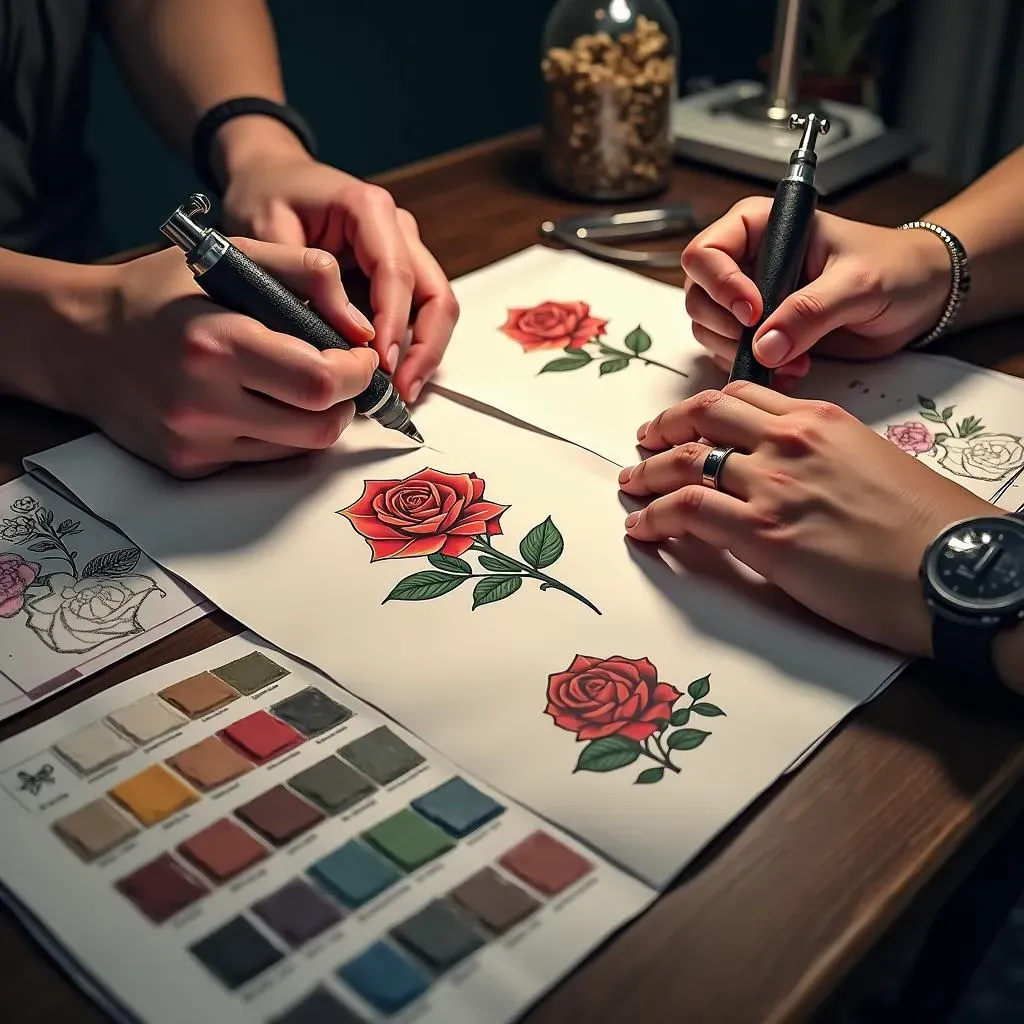Table of Contents
Tattooing is more than just ink on skin; it's an art form that has evolved over centuries. People get tattoos for many reasons: to express themselves, to remember loved ones, or simply because they like the way they look. But have you ever stopped to wonder, "how do tattoo artists make designs" that transform a blank canvas into a personal masterpiece? The process is more involved than you might think, blending artistic skill with technical precision. In this article, we'll explore the fascinating world of tattoo design, from the initial spark of inspiration to the final inked creation. We'll look at the tools they use, the considerations they keep in mind, and how you can work with an artist to bring your own tattoo vision to life. Whether you're planning your first tattoo or are simply curious about the craft, get ready to discover the secrets behind amazing tattoo designs.
Understanding the Tattoo Design Process
Understanding the Tattoo Design Process
Initial Consultation: Laying the Groundwork
The tattoo design process always starts with a conversation. It is where the artist gets to know you, your ideas, and what you want to express with your tattoo. Think of it like telling a story; you need to give the artist all the important details so they can translate it onto your skin. This includes discussing the size, placement, style, and any specific imagery you have in mind. Don't be shy about sharing your inspirations – whether it's a favorite painting, a meaningful photograph, or even just a feeling you want to capture.
During this consultation, be prepared to talk about your budget and pain tolerance. These factors can influence the complexity and size of the design. A good artist will be upfront about what's achievable within your limitations and will work with you to find a solution that meets your needs. Also, the best advice I can give you is to do your research before you even contact an artist. Knowing what kind of tattoo you want will make the consultation process smoother and more productive.
From Inspiration to Sketch: Bringing Ideas to Life
Once the artist has a clear understanding of your vision, they'll start sketching. This is where the magic happens! They'll take your ideas and turn them into a tangible design, often creating several variations for you to choose from. It's a collaborative process, so don't be afraid to provide feedback and ask for changes. Remember, this is your tattoo, and you want it to be perfect. Think of the artist as a translator. They are turning your ideas into a visual language.
Artists get inspiration from everywhere. "I look to art books and social media," says tattoo artist Salazar, "for inspiration." Don't be afraid to bring reference images, but trust your artist to create something unique for you. After all, you don't want a carbon copy of someone else's tattoo.
Design Stage | Description | Your Role |
|---|---|---|
Consultation | Discussing ideas, placement, and style. | Be clear about your vision and budget. |
Sketching | Artist creates initial designs. | Provide feedback and request changes. |
Refinement | Finalizing the design based on your feedback. | Ensure you're completely happy with the design. |
Finalizing the Design: Details and Refinements
After the initial sketch, the design goes through a refinement process. The artist will make adjustments based on your feedback, ensuring that every detail is perfect. This might involve tweaking the linework, adjusting the shading, or modifying the overall composition. They will consider the tattoo's placement on your body, making sure it flows naturally with your anatomy. It's like tailoring a suit; it needs to fit perfectly.
Color is also a critical consideration. The artist will help you choose a color palette that complements your skin tone and enhances the design. They'll also advise you on how the colors will hold up over time, as some pigments tend to fade more quickly than others. At this stage, it's important to trust your artist's expertise. They have the knowledge and experience to guide you towards a design that will look great for years to come. And, it's important to remember that communication is key.
Key Considerations When Tattoo Artists Make Designs
Key Considerations When Tattoo Artists Make Designs
Skin as Canvas: Understanding the Medium
Tattooing isn't like drawing on paper; skin is a living, breathing canvas. Artists need to consider its unique properties, such as elasticity, texture, and underlying structures. Some areas of the body are more sensitive than others, and certain spots are prone to stretching or fading over time. An experienced artist will know how to navigate these challenges, choosing the right needle size, ink depth, and design placement to ensure a long-lasting and visually appealing tattoo. They are basically architects designing for a building that moves.
Also, skin tone plays a huge role in how the tattoo will look. Darker skin tones can affect the vibrancy of certain colors, while lighter skin tones may show scarring more easily. The artist will take your skin tone into account when selecting a color palette, ensuring that the tattoo stands out and heals properly. It’s like picking the right filter for a photo; you want to enhance the natural beauty, not hide it.
Long-Term Vision: Considering Longevity and Fading
A good tattoo should look great not just today, but years down the line. Artists must consider how the design will age, taking into account factors like sun exposure, skin elasticity, and ink migration. Fine lines, for example, can blur over time, while densely packed areas of color may fade unevenly. An experienced artist will use techniques that minimize these effects, such as using bold linework, avoiding overly intricate details, and choosing high-quality inks that are known for their longevity. It's like investing in a good pair of boots; you want them to last.
Placement is also crucial for long-term appearance. Areas that experience a lot of friction, such as the hands or feet, tend to fade more quickly. Similarly, areas that are exposed to the sun are more prone to fading. The artist will advise you on the best placement for your tattoo, taking into account your lifestyle and the design itself. They might suggest a location that's less exposed or recommend using sunscreen to protect your tattoo from fading. It's like planning for the future; you want to make smart choices that will pay off in the long run.
Consideration | Description | Impact on Design |
|---|---|---|
Skin Tone | How skin color affects ink vibrancy. | Color palette selection. |
Placement | Location on the body and its effect on aging. | Design size and complexity. |
Longevity | How the tattoo will look over time. | Linework and shading techniques. |
Digital Tools That Tattoo Artists Use to Make Designs
Digital Tools That Tattoo Artists Use to Make Designs
Procreate and Tablets: The Digital Sketchbook
Forget paper and pencils, many tattoo artists are going digital! Apps like Procreate on tablets like the iPad Pro have become essential tools. They allow artists to sketch, refine designs, and experiment with different styles with ease. The ability to zoom in for detail work, undo mistakes, and quickly change colors is a game-changer. Plus, digital designs can be easily shared with clients for feedback and adjustments. It's like having an endless supply of paper and art supplies at your fingertips.
Digital tools also allow for easy integration of reference images. Artists can import photos, sketches, or other artwork directly into their designs, making it easier to create complex and realistic tattoos. Some artists even use 3D modeling software to create intricate designs that would be impossible to achieve by hand. "I love using Procreate because it allows me to create designs quickly and efficiently," says a tattoo artist I know. "It's also great for collaborating with clients remotely."
Tool | Description | Benefits |
|---|---|---|
Procreate | Digital illustration app for tablets. | Versatile, easy to use, and great for sketching. |
iPad Pro | Powerful tablet for digital art. | High resolution, responsive, and portable. |
Adobe Photoshop | Image editing and design software. | Advanced features for complex designs. |
Tips for Collaborating on Your Tattoo Design
Tips for Collaborating on Your Tattoo Design
Do Your Homework: Research and Inspiration
Before you even step into a tattoo shop, spend some time researching different styles, artists, and designs. Look at lots of tattoos online, in magazines, and on social media. Save the ones that resonate with you and try to identify what you like about them. Are you drawn to bold lines, intricate details, or specific color palettes? The more you know about your own preferences, the easier it will be to communicate your vision to the artist. It’s like studying for a test; the more prepared you are, the better you'll do.
Also, don't be afraid to look beyond tattoos for inspiration. A painting, a photograph, a piece of clothing, or even a natural landscape can spark an idea for a tattoo. The key is to find something that speaks to you and that you want to wear on your skin for the rest of your life. It's like finding the perfect song; you know it when you hear it.
Communicate Clearly: Expressing Your Vision
Communication is key to a successful tattoo collaboration. Be clear and specific about what you want, but also be open to the artist's suggestions and expertise. Bring reference images to show the artist the style, imagery, and colors you like. Don't just say, "I want a rose;" show them examples of roses that you find appealing. The more information you provide, the better the artist will understand your vision. It’s like giving directions; the more detailed you are, the less likely they are to get lost.
Also, don't be afraid to ask questions and voice your concerns. If you're unsure about something, speak up! A good artist will be happy to explain their process, answer your questions, and address any concerns you may have. Remember, this is a collaboration, and you're both working towards the same goal: a tattoo that you'll love for years to come. It's like building a house; you want to make sure everyone is on the same page.
Communication Tip | Description |
|---|---|
Be Specific | Provide detailed information about your vision. |
Ask Questions | Clarify any doubts or concerns you have. |
Be Open | Listen to the artist's suggestions and expertise. |
Trust the Artist: Embrace Their Expertise
You've chosen your artist for a reason, so trust their expertise and artistic judgment. They are the professionals, and they have the knowledge and experience to create a tattoo that will look great and last for years to come. While it's important to have a clear vision for your tattoo, be open to the artist's suggestions and let them work their magic. They might have ideas that you hadn't considered, or they might be able to improve your design in ways you never imagined. It's like hiring a chef; you trust them to create a delicious meal.
Of course, trust goes both ways. Be respectful of the artist's time and talent, and avoid micromanaging their work. Give them the space to create and trust that they'll deliver a tattoo that you'll love. After all, they're artists, not robots. "I find that my best work comes when the client trusts me and gives me the freedom to create," says a tattoo artist I spoke with. It's like dancing; you need to trust your partner to lead.
Conclusion: The Art and Science of Tattoo Design
Creating a tattoo design is a complex blend of artistry, technical skill, and collaboration. Tattoo artists pour their creativity and expertise into every piece, considering everything from the client's personal story to the way the design will flow with the body's contours. Whether they're sketching ideas by hand or using digital tools to refine their vision, their goal is to create a tattoo that is both meaningful and visually stunning. So next time you see a great tattoo, remember the thought and effort that went into it. It's a permanent piece of art, a story etched in ink, brought to life by the skilled hands of a tattoo artist.